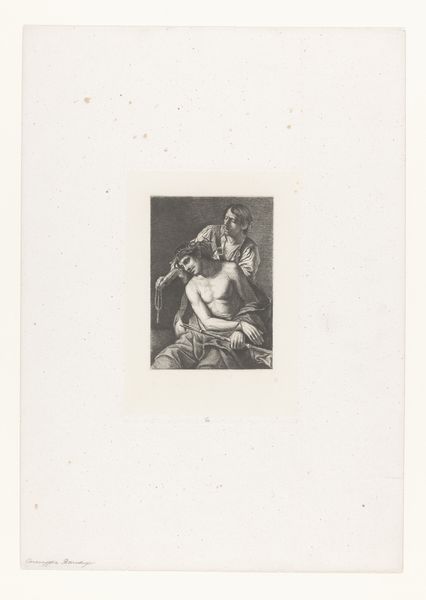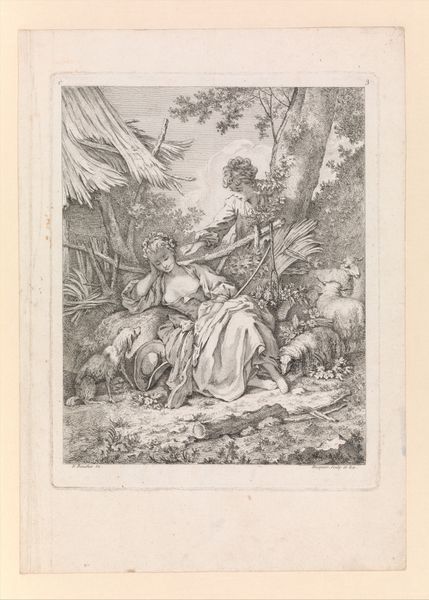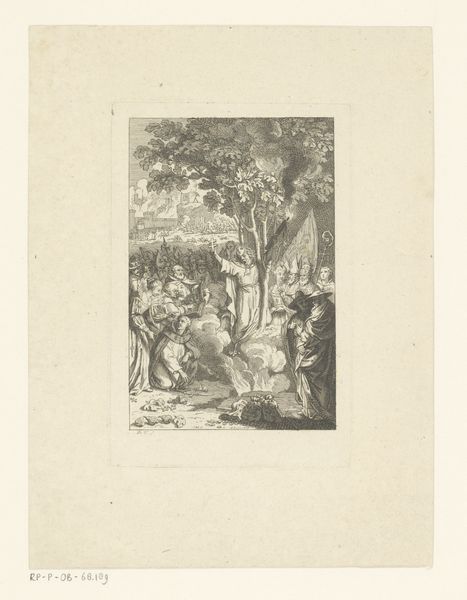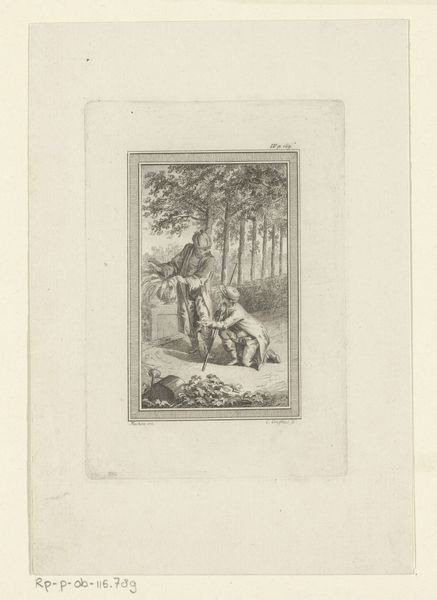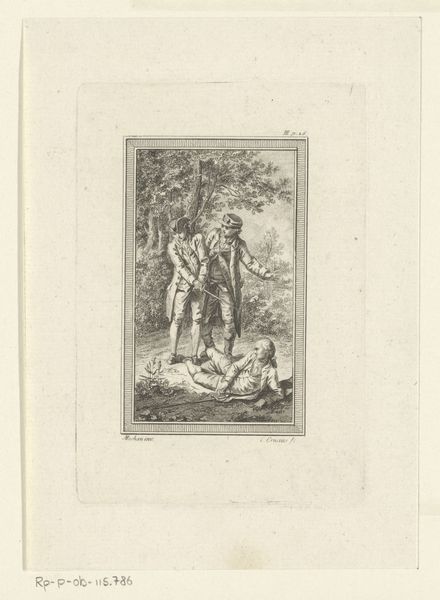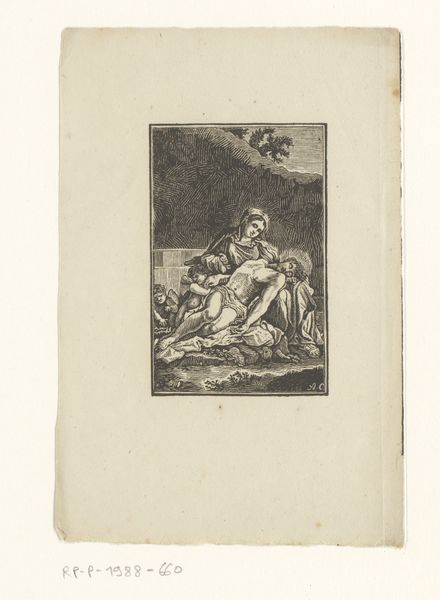
print, paper, engraving
# print
#
landscape
#
figuration
#
paper
#
nude
#
engraving
#
rococo
Dimensions: height 124 mm, width 79 mm
Copyright: Rijks Museum: Open Domain
Editor: Here we have "Venus with two putti in a forest", an engraving on paper by Noël Le Mire, dating from around 1760, housed in the Rijksmuseum. It's a pastoral scene, with a reclining nude Venus. What can you tell me about it? Curator: This piece exemplifies the Rococo's focus on materiality and the labor of reproduction. We must look past the idealization of Venus and consider the physical process of its making: the engraver's skill transforming a copper plate, the paper itself – its sourcing and production. How does this reproduction democratize access to classical ideals, and how does its distribution reshape those ideals within a burgeoning consumer culture? Editor: That's an interesting angle. I hadn’t thought about the paper and the printing process as key to its meaning, focusing on access. Curator: Precisely. Consider also the societal context: engravings like these weren’t simply aesthetic objects. They were commodities, circulated in a marketplace, consumed by a rising middle class with new leisure time. The “high art” subject matter becomes just another item in the expanding world of material culture. How does this commodification of beauty impact its value and perceived authenticity? Editor: So, you're suggesting that by focusing on the materials and the process of production, we can understand how even a seemingly traditional subject like Venus becomes entangled with broader economic and social forces. Curator: Exactly! By interrogating the materials and labor that went into this engraving, we challenge the traditional separation of “art” and “craft.” We unveil the socio-economic networks that enabled its creation and distribution. Editor: I see it now, you have helped me learn the work is an object of labour and circulation that offers a lens through which to analyze Rococo society’s material priorities. Curator: That is how material history helps see what others do not, by unveiling value beyond pure artistic impression.
Comments
No comments
Be the first to comment and join the conversation on the ultimate creative platform.



